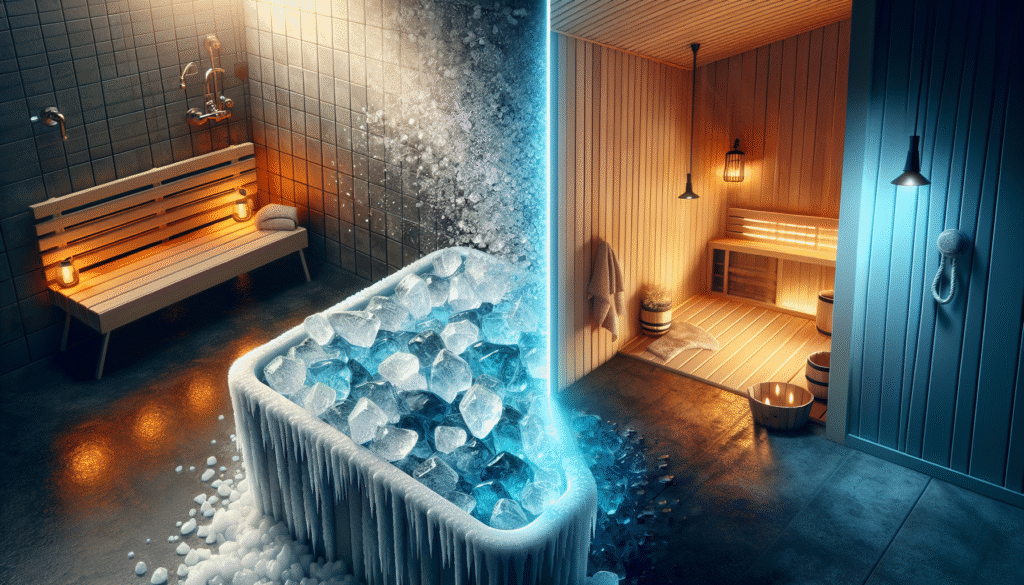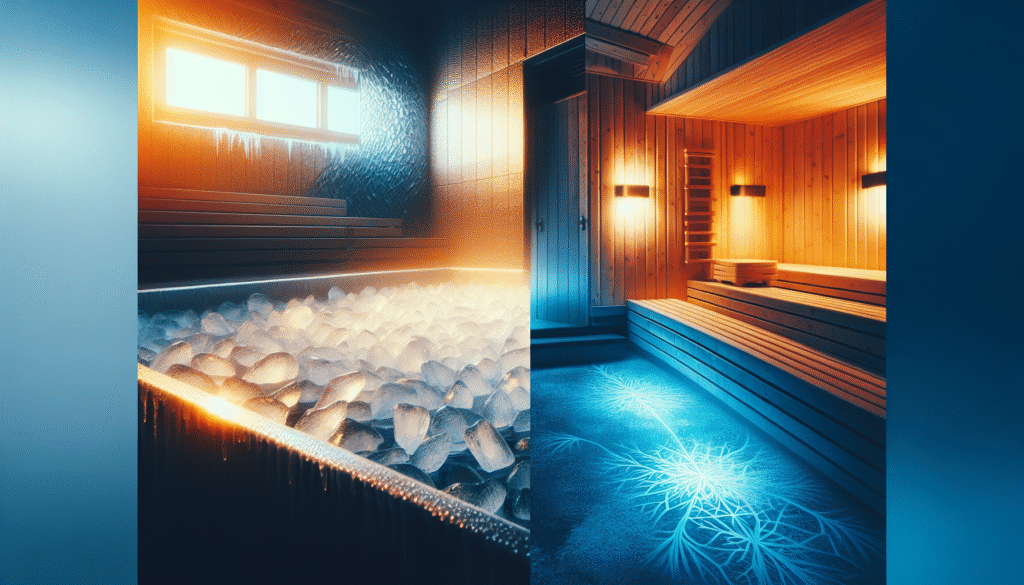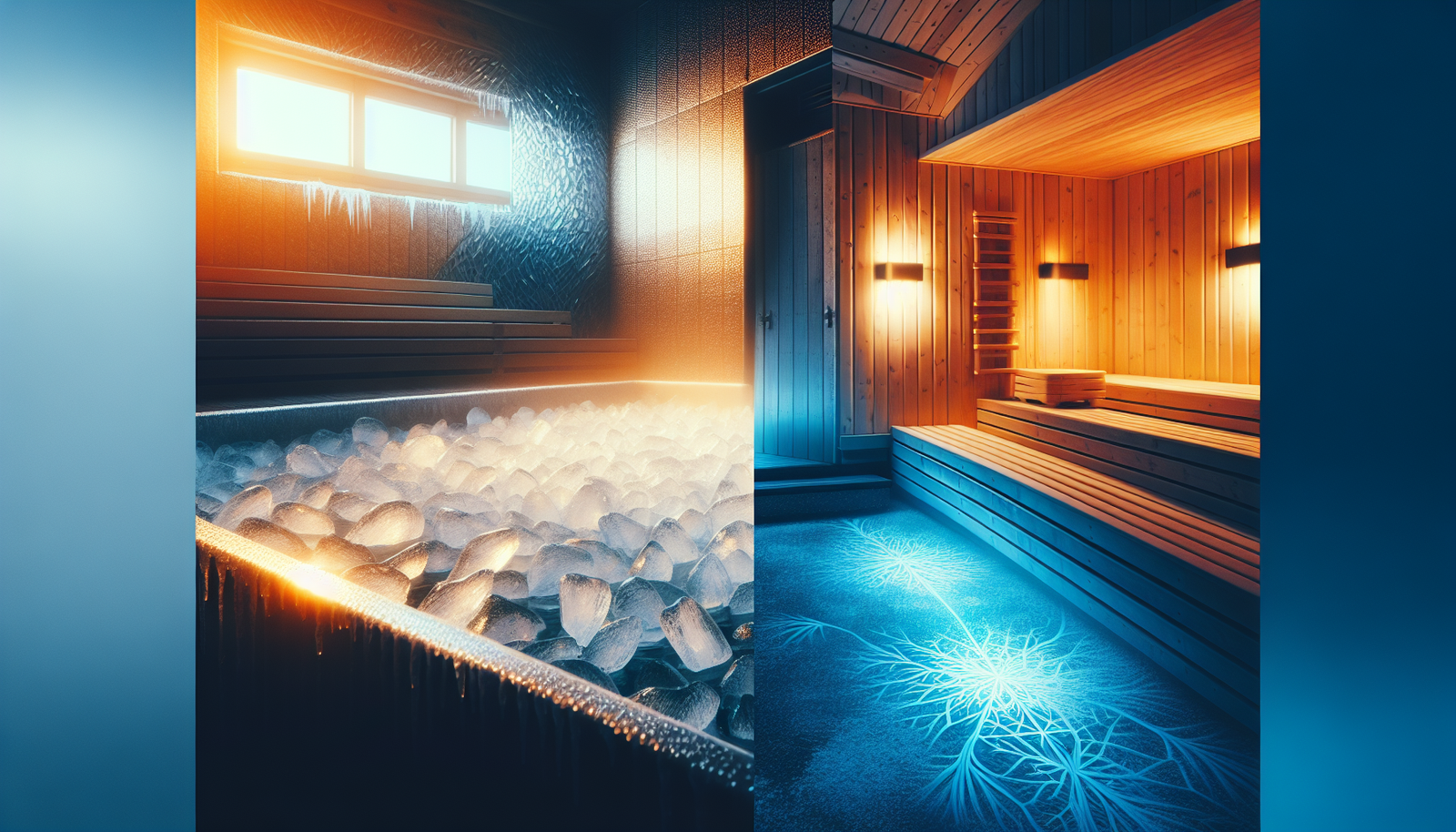What role do temperature extremes play in your health and well-being? You might have noticed the recent buzz around both cold plunging and sauna sessions. Both practices have been embraced by many wellness enthusiasts, but have you ever wondered which one is right for you? In this article, we’ll break down the health benefits of cold plunging versus sauna use, so you can make an informed choice that aligns with your lifestyle and wellness goals.
Understanding Cold Plunging
Cold plunging, often referred to as cold water immersion, involves submerging your body in cold water for a brief period. It might seem daunting at first, but people report a rush of energy, improved mood, and various health benefits associated with this practice.
The Science Behind Cold Water Immersion
When you expose your body to cold temperatures, it triggers several physiological responses. Your blood vessels constrict, which can help to reduce inflammation. The cold also prompts the release of endorphins, those feel-good hormones that can elevate your mood. Think of it as a wake-up call for your body.
Health Benefits of Cold Plunging
-
Reduced Inflammation One of the most significant benefits of cold plunging is its ability to reduce inflammation. This is particularly helpful if you’re recovering from an intense workout or battling sore muscles. Cold water can help soothe aches and pains, reducing recovery time.
-
Enhanced Mood Feeling a bit low? Cold plunging can be a game changer. The shock of cold water can stimulate endorphin release, giving you an instant mood boost. It’s hard to feel down when you’re invigorated by icy water.
-
Improved Immune Function Regular cold exposure may strengthen your immune system. Some studies suggest that individuals who practice cold plunging regularly experience fewer illnesses.
-
Increased Circulation When you first immerse yourself in cold water, your heart rate may increase. This helps pump blood to your vital organs, improving circulation and overall cardiovascular health.
-
Enhanced Recovery Athletes have long used ice baths for recovery. Cold plunging can help reduce muscle soreness and speed up recovery times, which is beneficial whether you’re an athlete or just someone who enjoys being active.

The Basics of Sauna Use
On the flip side, sauna usage involves sitting in a room heated to a high temperature. It’s a practice that has been around for centuries, especially in Nordic cultures, and is lauded for its relaxing effects and several health benefits.
The Science Behind Heat
While it may seem counterintuitive, exposing your body to heat can have profound health benefits. This practice leads to increased heart rate and improved circulation much like moderate exercise, resulting in a variety of positive impacts on your health.
Health Benefits of Sauna
-
Detoxification Sweating is your body’s natural way to rid itself of toxins. Saunas induce sweating, which can help eliminate heavy metals and other harmful substances from your system.
-
Improved Cardiovascular Health Regular sauna use has been associated with lower blood pressure and improved heart function. By increasing your heart rate, you’re giving your cardiovascular system a workout, which can be beneficial in the long run.
-
Better Sleep Quality If you struggle with sleep issues, a sauna session might just be what you need. The relaxation from heat exposure can lead to improved sleep quality at night, helping you feel more rested.
-
Stress Relief Just as with cold plunging, saunas can also help alleviate stress. Taking time to sit in a sauna allows you to unwind, which can significantly benefit your mental well-being.
-
Pain Relief For those suffering from chronic pain conditions, heat can provide relief. Saunas can help increase blood flow to sore muscles and joints, promoting healing and reducing discomfort.

Comparing Cold Plunging and Sauna
Now that we’ve covered the individual benefits, let’s take a closer look at how cold plunging and sauna usage stack up against each other in various aspects of health and wellness.
Benefits Overview
| Benefit | Cold Plunging | Sauna |
|---|---|---|
| Reduced Inflammation | Yes | Yes |
| Enhanced Mood | Yes | Yes |
| Improved Immune Function | Yes | – |
| Increased Circulation | Yes | Yes |
| Enhanced Recovery | Yes | – |
| Detoxification | – | Yes |
| Improved Cardiovascular Health | – | Yes |
| Better Sleep Quality | – | Yes |
| Stress Relief | Yes | Yes |
| Pain Relief | – | Yes |
Which One Should You Choose?
Both practices offer unique benefits, and your choice largely depends on your individual health goals, preferences, and even lifestyle.
- If you’re looking to reduce inflammation, recover faster from workouts, or even boost your mood rapidly, then cold plunging might be your go-to.
- If detoxification, cardiovascular health, and overall relaxation are high on your list, then a sauna could be what you’re after.

Combining Cold Plunging and Sauna Use
You might be wondering if you can incorporate both practices into your routine. The short answer is yes! Some enthusiasts advocate alternating between hot and cold exposure, which can amplify the benefits of each.
How to Create a Routine
-
Start With the Sauna
Enjoy a soothing sauna session first. Spend about 15-20 minutes allowing your body to heat up, relax, and sweat out toxins. -
Transition to Cold Plunging
After your sauna session, a quick dip in cold water can invigorate your senses. Just a couple of minutes can do wonders, but listen to your body and don’t overstay. -
Repeat as Desired
You can alternate these sessions a few times. However, make sure to hydrate adequately in between, as both exposure types can lead to dehydration.

Potential Risks and Considerations
While both cold plunging and sauna usage offer great health benefits, they are not without their risks. It’s essential to consider your health status before diving into either practice.
Cold Plunging Risks
- Hypothermia: Prolonged exposure to extremely cold water can lead to hypothermia. Always limit your time to a few minutes and ensure safety measures are in place.
- Cardiac Stress: If you have heart-related conditions, the shock of cold water can increase heart rate quickly; consult a physician beforehand.
Sauna Risks
- Dehydration: Excessive sweating can lead to dehydration. It’s crucial to drink water before and after sauna sessions.
- Heat Exhaustion: Spending too long in a sauna can lead to heat exhaustion. Always listen to your body and exit if you feel dizzy or unwell.

Conclusion: Finding Your Balance
In the end, both cold plunging and sauna use can be excellent additions to your wellness routine. They each offer distinct advantages, so the question becomes not which one is better, but which one suits you more effectively.
Experimenting with both practices may yield incredible benefits you didn’t even know you needed. Whether it’s the rush of energy from a cold plunge or the deep relaxation from a sauna, integrating thermal exposure into your life can enhance your health and well-being.
Ultimately, it’s about what makes you feel good and supports your body. Take your time, listen to your body, and don’t hesitate to reach out to a healthcare professional if you have specific health concerns. You’re on a journey towards better health and wellness, and both the sauna and cold plunge can be powerful allies on that path.

